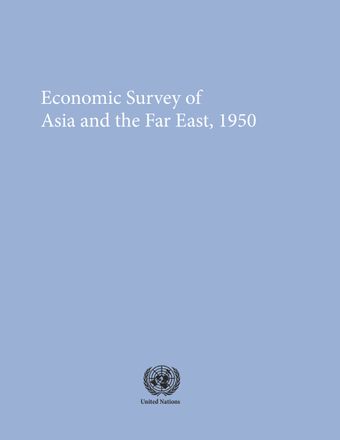International trade and payments

- Author: United Nations Economic and Social Commission for Asia and the Pacific
- Main Title: Economic and Social Survey of Asia and the Far East 1950 , pp 309-378
- Publication Date: December 1950
- DOI: https://doi.org/10.18356/be745533-en
- Language: English
For the first time in post-war years, an export surplus for the region as a whole re-emerged in 1950. This marked a new phase of development in international trade after the war. Before the war, there was normally an export surplus. In the earlier post-war period, however, there had been a growing import surplus up to 1948. This post-war import surplus, only slightly reduced in 1949, exercised great pressure on the foreign-exchange reserves of countries in the region and various exchange and trade controls were reinstituted or tightened. A shortage of dollars was also felt by almost all countries in the region. The growing import surplus during the early post-war period was incurred at an increasing level of imports and exports. But trade levelled off in 1949, as extraordinary post-war demands had been largely satisfied, foreign-exchange reserves depleted, and import demands of the United States decreased owing to the economic recession in that country. This led to a tightening of import control in some countries and to devaluation in most countries in the region, led by the devaluation of sterling.
-
From This Site
/content/books/9789210599412s002-c005dcterms_title,dcterms_subject,pub_keyword-contentType:Journal -contentType:Contributor -contentType:Concept -contentType:Institution105


